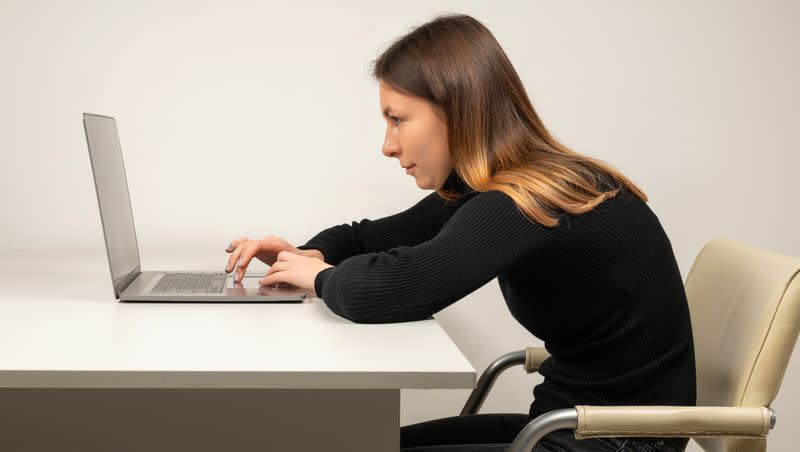Why minding your posture is minding your mood

Peter Strick, a noted neuroscientist at the University of Pittsburgh, rode a big dose of skepticism to his eventual respect for yoga and improved posture.
He recently explained the connection between sitting up straight and a reduction in stress and anxiety on NPR’s TED Radio Hour.
A number of studies have shown that if you avoid slouching at your desk or over your phone, you’ll feel better mentally. Strick doubted it, but was willing to investigate. He’d already invented a way to inject a virus into an organ so he could see the neural pathways connecting muscles to the brain and decided to test the link between stress and posture.
“So we injected the adrenal medulla with a virus and we traced it back into the brain all the way to the cerebral cortex and then mapped which cortical areas influenced the adrenal,” he told NPR. “And that’s where the surprise came.”
That surprise, outlined in a study in the Proceedings of the National Academy of Sciences, is that the human stress response is not just connected to the brain’s “thinking” centers. “Other parts of the brain, including those which control our muscles, are also sending signals to the adrenal medulla,” the NPR article notes.
Strick confirmed that strengthening core muscles “can modulate that stressful, fight-or-flight response.” Core muscles, brain and adrenal glands team up.
“There’s a clear link between how we move, think and feel,” Strick told NPR. “The muscles that control posture, our core muscles, have an impact on an organ that is involved in stress.”
The posture and well-being connection
Other researchers confirm the connection between good posture and well-being or bad posture and stress and anxiety. In 2015, 74 people were randomly assigned to a slumped or upright seated posture, then researchers used physiotherapy tape to hold them in position for a study that was later published in Health Psychology.
Per the study, participants with upright posture showed “higher self-esteem, more arousal, better mood and lower fear compared to slumped participants. Linguistic analysis showed slumped participants used more negative emotion words, first-person singular pronouns, affective process words, sadness words and fewer positive emotion words and total words,” compared to those who were upright.
Related
The team concluded that “sitting upright may be a simple behavioral strategy to help build resilience to stress.”
The Mayo Clinic claims that “poor postural habits may restrict your rib cage and compress your diaphragm. This can reduce lung capacity, leading to shallow or labored breathing, fatigue and lack of energy, which can affect your overall productivity.”
Slouching puts pressure on the heart muscle, per that article.
Good posture helps with unexpected things, like math. A San Francisco State University study published in NeuroRegulation in 2018 looked at how well college kids did simple math, based on their posture. Comparing sitting up straight and slumping, 56% said it was easier to do math in the upright position, per a report in ScienceDaily.
“For people who are anxious about math, posture makes a giant difference,” said Erik Peper, a professor of health education. “The slumped-over position shuts them down and their brains do not work as well. They cannot think as clearly.”
Per the report, Peper and coauthor Richard Harvey, an associate professor of health education, “say these findings about body position can help people prepare for many different types of performance under stress, not just math tests. Athletes, musicians and public speakers can all benefit from better posture prior to and during their performance. ‘You have a choice,’ said Peper. ‘It’s about using an empowered position to optimize your focus.’”
Sitting up straight
Mom was onto something when she told you to sit up straight. But a slumping body can become a habit — that needs to be broken.
Discover Magazine offers some advice to fix that bad posture:
Line your head’s position with your spine, “not drooping over or tilted back.”
Imagine a string running from your tailbone to the top of your head. Then pull that string tight to pull your head up, your shoulders back and your stomach in.
Exercise your core muscles regularly.
Finally, “if you spend a lot of time sitting at a desk, arrange your work area so that you’re sitting comfortably upright. If you can afford it, invest in an ergonomic desk chair.”
And if you’re someone who struggles to stand or sit up straight, Forbes created a guide to the best posture correctors available.

